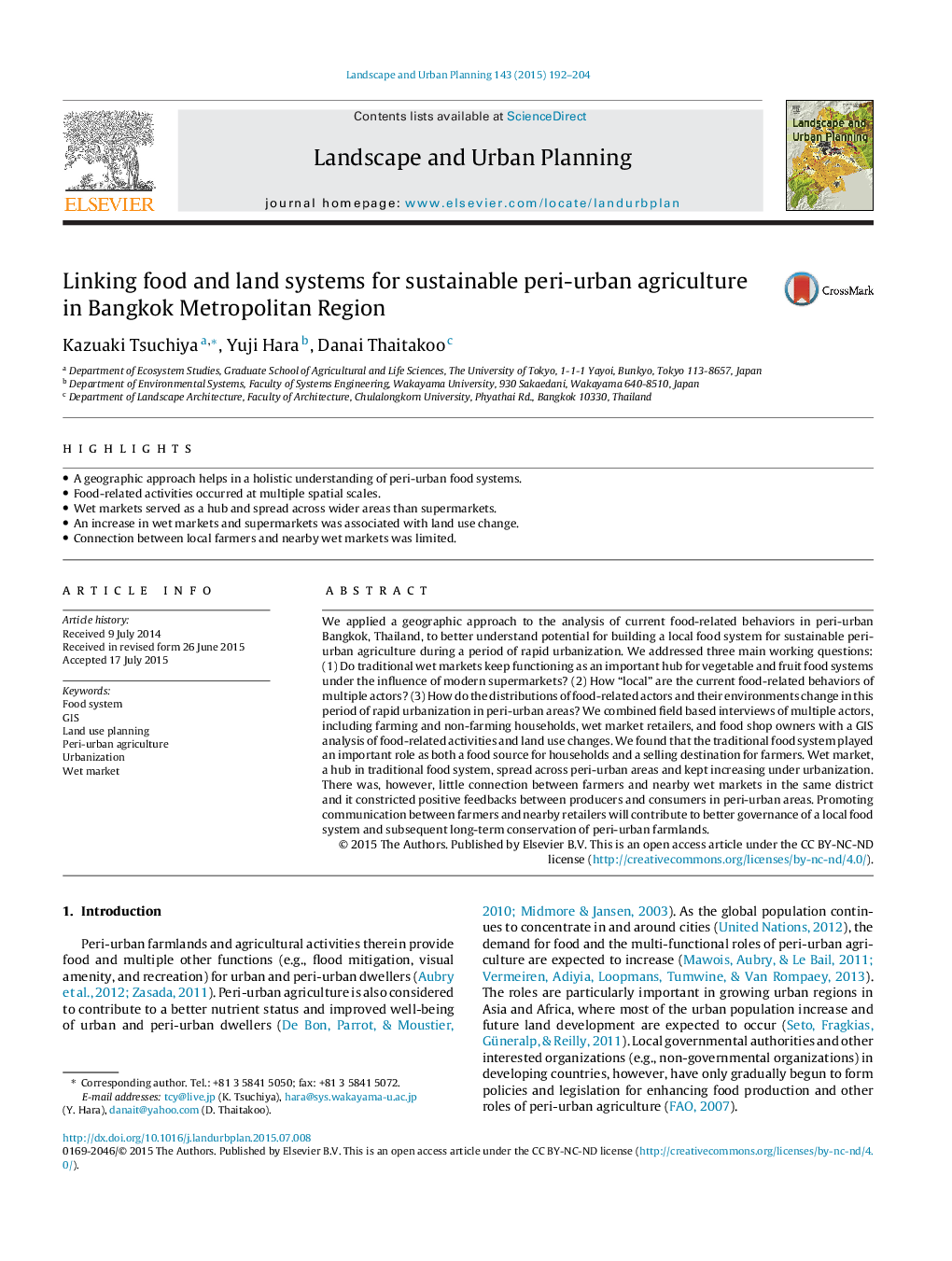| Article ID | Journal | Published Year | Pages | File Type |
|---|---|---|---|---|
| 7461044 | Landscape and Urban Planning | 2015 | 13 Pages |
Abstract
We applied a geographic approach to the analysis of current food-related behaviors in peri-urban Bangkok, Thailand, to better understand potential for building a local food system for sustainable peri-urban agriculture during a period of rapid urbanization. We addressed three main working questions: (1) Do traditional wet markets keep functioning as an important hub for vegetable and fruit food systems under the influence of modern supermarkets? (2) How “local” are the current food-related behaviors of multiple actors? (3) How do the distributions of food-related actors and their environments change in this period of rapid urbanization in peri-urban areas? We combined field based interviews of multiple actors, including farming and non-farming households, wet market retailers, and food shop owners with a GIS analysis of food-related activities and land use changes. We found that the traditional food system played an important role as both a food source for households and a selling destination for farmers. Wet market, a hub in traditional food system, spread across peri-urban areas and kept increasing under urbanization. There was, however, little connection between farmers and nearby wet markets in the same district and it constricted positive feedbacks between producers and consumers in peri-urban areas. Promoting communication between farmers and nearby retailers will contribute to better governance of a local food system and subsequent long-term conservation of peri-urban farmlands.
Related Topics
Life Sciences
Agricultural and Biological Sciences
Ecology, Evolution, Behavior and Systematics
Authors
Kazuaki Tsuchiya, Yuji Hara, Danai Thaitakoo,
